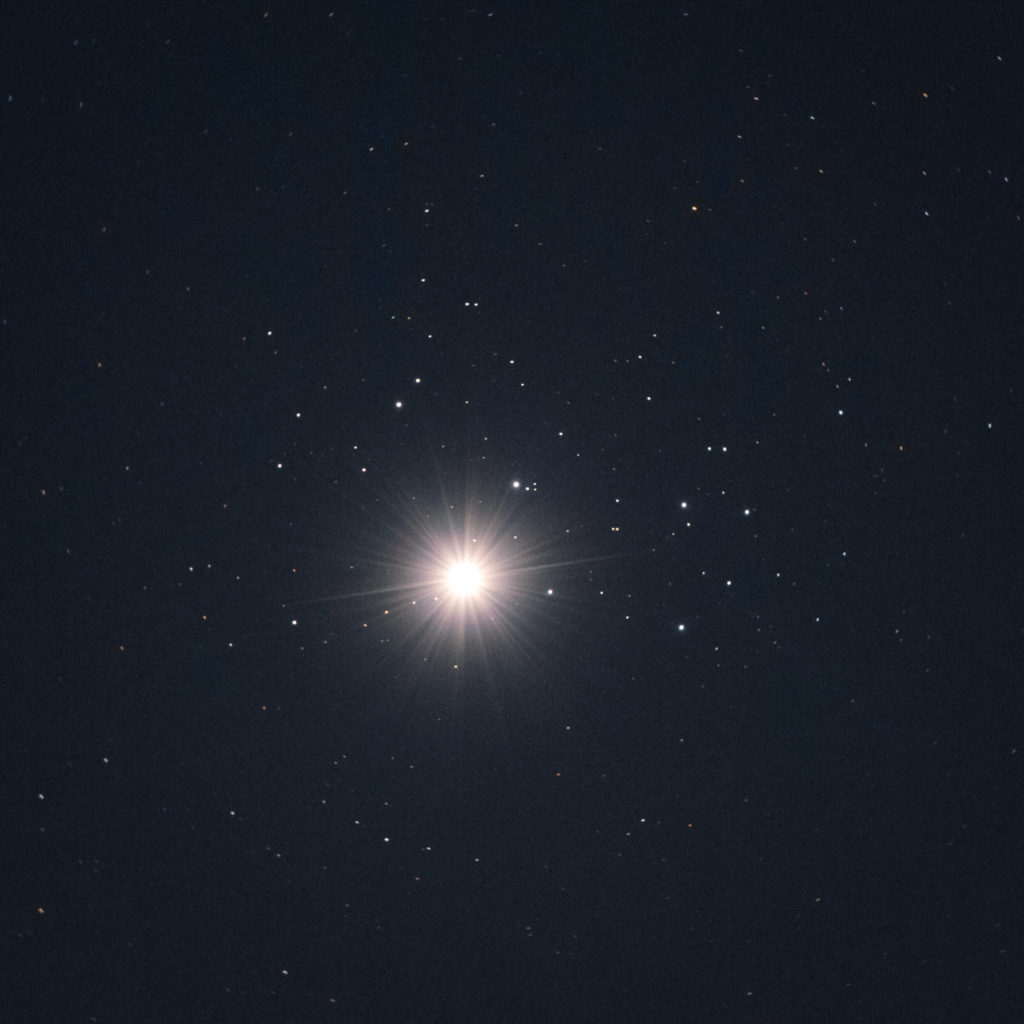
This is a picture from Friday 3rd April 2020 (last night at the time of writing) of the planet Venus nestled amongst the stars of the Pleiades cluster.
It was spectacularly clear for just the right hour last night, allowing me to capture this shot in defiance of the weather forecast. To the naked eye, the Pleiades were a bit washed out by moonlight, but the camera—or binoculars or a telescope—was able to make them out beautifully.
It’s a moderately rare sight—Venus only joins the Pleiades in the sky for one night every eight years. When I read about this coming up a week or two ago, I thought ‘wow, maybe it’s not as unusual as I remember!’…before realising that 2012 was, er, eight years ago. I feel old now!
This conjunction has particular resonance* for me because it coincides with years when there’s a Transit of Venus—a far more unusual astronomical event which last occurred in 2012, and 2004 before that, but won’t be seen again until 2117. I missed the one in 2004, but the 2012 one was very special: it happened just after dawn and, after a very early start on June 6th, and a nerve-wracking hour or so waiting for clouds to clear, we got a spectacular glimpse just as the transit drew to a close.

Transits of Venus coincide with conjunctions between Venus and the Pleiades for the same reason I explain in one of my first YouTube videos—a combination of Earth and Venus’s orbits being at a slight angle to one-another, plus their not-quite-in-sync timing. It’s just that a conjunction with the Seven Sisters is a bit less position-critical than a transit, so it happens once every eight years, rather than twice a century!
Venus will be near the Pleiades for a few more nights yet, so do check it out if you have clear skies in the west. If not, see you for the next one in 2028!
* Yes, this is an orbital dynamics pun. Venus and Earth are in a near-perfect resonance, which makes for some beautiful patterns. ↩︎